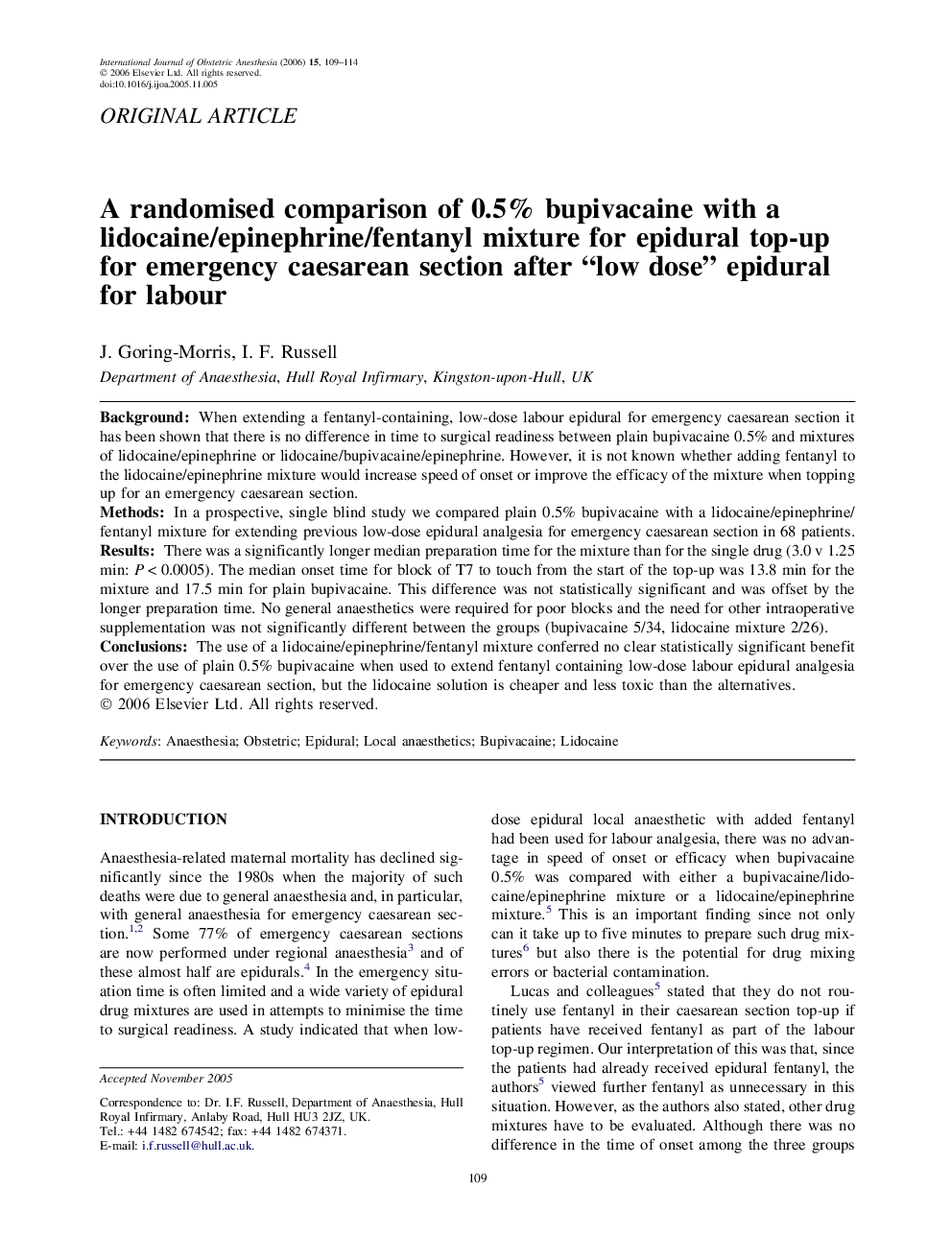| Article ID | Journal | Published Year | Pages | File Type |
|---|---|---|---|---|
| 2758661 | International Journal of Obstetric Anesthesia | 2006 | 6 Pages |
BackgroundWhen extending a fentanyl-containing, low-dose labour epidural for emergency caesarean section it has been shown that there is no difference in time to surgical readiness between plain bupivacaine 0.5% and mixtures of lidocaine/epinephrine or lidocaine/bupivacaine/epinephrine. However, it is not known whether adding fentanyl to the lidocaine/epinephrine mixture would increase speed of onset or improve the efficacy of the mixture when topping up for an emergency caesarean section.MethodsIn a prospective, single blind study we compared plain 0.5% bupivacaine with a lidocaine/epinephrine/fentanyl mixture for extending previous low-dose epidural analgesia for emergency caesarean section in 68 patients.ResultsThere was a significantly longer median preparation time for the mixture than for the single drug (3.0 v 1.25 min: P < 0.0005). The median onset time for block of T7 to touch from the start of the top-up was 13.8 min for the mixture and 17.5 min for plain bupivacaine. This difference was not statistically significant and was offset by the longer preparation time. No general anaesthetics were required for poor blocks and the need for other intraoperative supplementation was not significantly different between the groups (bupivacaine 5/34, lidocaine mixture 2/26).ConclusionsThe use of a lidocaine/epinephrine/fentanyl mixture conferred no clear statistically significant benefit over the use of plain 0.5% bupivacaine when used to extend fentanyl containing low-dose labour epidural analgesia for emergency caesarean section, but the lidocaine solution is cheaper and less toxic than the alternatives.
